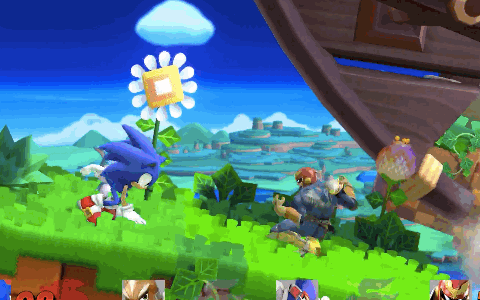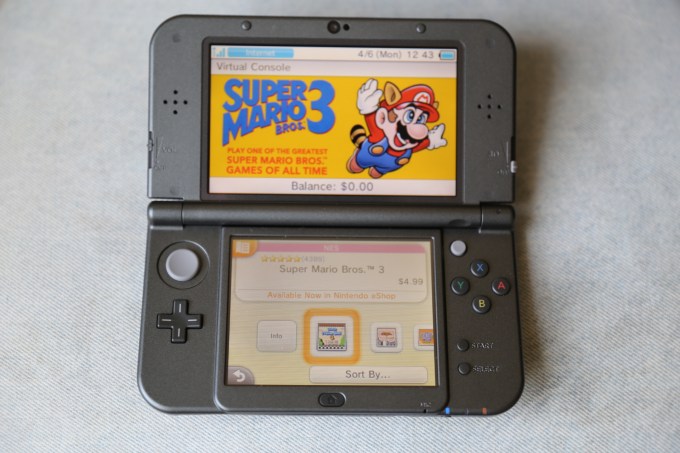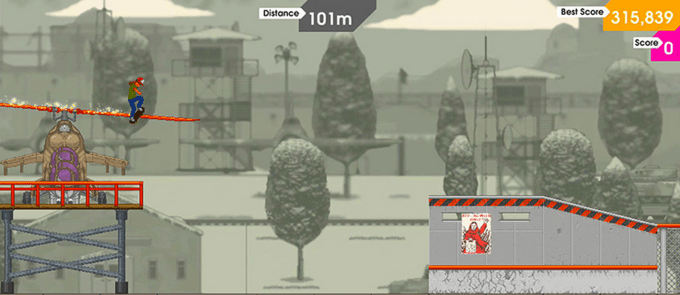With the rise of iOS and Android, hundreds of millions of people have come to see mobile gaming as an activity done on their phones rather than a dedicated device.
Portable consoles like the Nintendo 3DS and PlayStation Vita offer plenty of fun experiences built from the ground up for their hardware and controls, but in the grand scheme of things, what was once the norm for the space is now the niche, just as point-and-shoot cameras were subsumed by the rise of the smartphone.
In the home, Nintendo’s now in a very far third place behind the PlayStation 4 and Xbox One, just one generation after outselling Sony and Microsoft by 20 million units with the original Wii. If it weren’t for Nintendo’s high attach rate (it can get a lot of Nintendo fans to pick up every single new release for $59), the console would look like an absolute disaster.
Where Things Went Wrong
Nintendo’s home console has basically lost all support from third-party publishers, and it’s Nintendo’s own fault. The Wii U, which dropped a year ahead of the PlayStation 4 and Xbox One, was more of a PlayStation 3.5 in terms of CPU and GPU horsepower. For its first year or two, we saw a number of ports from previous-gen consoles, which brought familiar graphics and some gimmicky use of the Wii U’s touch screen for things like maps for aiming distant shots in games like Batman: Arkham City — Armored Edition.
Now that developers are starting to focus on Sony and Microsoft’s newer consoles, the Wii U is being left behind. Unlike the PlayStation 4 and Xbox One, which transitioned to an x86 architecture that essentially uses PC parts, Nintendo’s console still relies on a custom PowerPC architecture that’s backwards compatible with the original Wii. It’s a non-trivial task to port games to a less-powerful console — you have to peel away things like shaders and high-resolution textures and detailed character models until performance is acceptable, and in some cases you can’t do so without breaking the visual design of your game.
In a market where tentpole games with huge marketing budgets need to sell millions of units to make a profit, developers have opted not to invest the time and money in making Wii U-compatible versions of their games only to have a total addressable market of ~10 million consoles. It started with games from the likes of EA Sports, but now you’re unlikely to find more than a handful of third-party Wii U games lining the shelves of GameStop or even Nintendo’s eShop.
People don’t get a Wii U to play the mega-blockbusters like Call of Duty and Grand Theft Auto with their friends, they get them for Super Smash Brothers and Mario Kart and The Legend of Zelda (you’re killing me with that delay, Nintendo). The typical usage cycle for the Wii U looks something like this: buy the console with your very favorite exclusive game. Play the heck out of it, then pick up the next Nintendo-made favorite. Once you’ve gone through the titles that match your interests, it’s a waiting game for the next big exclusive, and in the meantime there are all the new titles coming out for PCs and other consoles.

Super Smash Bros. is one of the series keeping core gamers interested in Nintendo’s consoles.
“You buy Nintendo consoles for Nintendo games” has been a mantra to the devout Mario enthusiasts for a long time, and it’s more accurate today than in previous generations of their hardware. Yet the company has yet to embrace this fact in a way that could mellow this generation’s dip in popularity. If Nintendo is currently sustained by a small subset of very dedicated users buying every major release, by golly it should be doing everything it can to keep those customers engaged and happy.
Finding The Right Path
Some recent events around Nintendo’s Virtual Console and digital storefront provide a lens with which to examine the company’s current strategy and execution.
Last week, Nintendo announced that it was bringing games from the Nintendo 64 and Nintendo DS consoles to the Wii U’s Virtual Console. The first wave of titles included just two games: Super Mario 64 and Yoshi’s Island DS. This limited release seems rather odd, given the fact that the emulation community has been playing games from both consoles (with legally-tenuous backups of game files) on less powerful devices for years.
As I noted in my write-up of the news, the Wii U was long expected to get games from the DS. The touch screen and stylus, while not the selling point Nintendo probably hoped for when it designed the console, makes it feasible to essentially provide the exact same control scheme as the DS. When the Wii U launched in 2012, I hoped that we’d get a wave of DS games over the course of 2013 and 2014, as happened with the original Wii’s Virtual Console library from late 2006 through 2008.
Instead, Nintendo seems to have gotten more conservative with its Virtual Console strategy over time, not more aggressive. On top of limited launches, there are also fewer games available for emulation through official means now than there were on the original Wii, which received 20 more titles from the Nintendo 64 than the Wii U. There are also odd limitations with regard to which consoles get to play which older games: for some reason, Nintendo has opted to make Super Nintendo and Game Boy Advance games unavailable for the 3DS despite its more-than-capable hardware. And if you buy a game for the Nintendo Entertainment System for your Wii U and then decide you want to play it on the go, you have to repurchase it from the 3DS eShop — games are tied to your console, not your Nintendo Network ID.

You’ll have to buy that classic twice if you want it on your 3DS and Wii U.
There are some strategic reasons Nintendo could give to justify its current release tactics. For instance, remakes of the two Nintendo 64 Legend of Zelda games have become 3DS killer apps, and maybe the company thinks it would lose out on sales if those gamers could have spent $10 on an older version that works on their Wii U. That users have to purchase games twice to have them at home and on-the-go probably looks pretty nice from an accounting perspective. But I have a hunch they’re missing out on sales from the Nintendo die-hards who would buy the company’s classics just to have them in their library, conveniently and legally, forever.
That’s the angle Sony has taken the PlayStation Vita and its home consoles: if you buy a PSone classic on the Vita, you can also download it on your PlayStation 3 or 4 for no extra charge. And once you’ve started making progress in the game, you can transfer your save files between systems and pick up gameplay on whichever device is more convenient.
Ideally, Nintendo would follow that tactic, letting you pick up the original Metroid or Golden Sun on either the 3DS or Wii U, save your state, and then keep playing on your other console with all progress seamlessly transitioning between the two. And we wouldn’t be limited to a handful of cherry-picked releases from a few consoles: Nintendo should aim to have as much of its first-party library available on both platforms as possible: NES through N64, with any consoles from Sega’s past serving as icing on the cake. I’m not the first to suggest this — just over a year ago, Polygon’s Ben Kuchera and TechCrunch columnist M.G. Siegler called for a similar move, and the case for it has only gotten stronger since then.
Going Forward
The Wii U is still a sales flop and we’re a few years out from the next Nintendo console, which is rumored to either share hardware and software architectures between portable and at-home consoles or simply exist as a single unit that can fulfill both roles. As the company prepares for that eventual launch, it has plenty of time to push its Virtual Console and account strategy towards the ideal, so that by the time there’s a unified philosophy Nintendo fans will either already have content to enjoy on their new devices or be used to the idea of buying a game for both.

OlliOlli, one of the first games you can buy for both the 3DS and Wii U with one purchase.
There are a few signs that Nintendo is finally zeroing in on that mindset. There’s the mobile gaming deal with DeNA, which includes bringing characters like Mario and Link to smartphone games as well as a new online service that should finally keep all of your Nintendo account info in one place. Early last month, Nintendo also announced a “radical” new deal: if you buy indie skateboarding game OlliOlli for either the Wii U or 3DS, you automatically get a copy of the game on the other console for free. It’s not quite the same as PlayStation’s nearly ubiquitous “cross-buy” label for PSone and indie games, but it’s a step in the right direction.
To be clear, there are reasons for rolling out such a strategy than simply satisfying super fans, as Nintendo itself has shown. In late 2013/early 2014, Nintendo and The Pokemon Company rolled out the Pokémon Bank, an app for the 3DS that lets you keep Pokémon in the cloud for a $5 annual fee. In the past, transferring your digital creatures between games (to “catch em all”) required multiple consoles and cartridges — compared to the old system, the new method feels convenient enough to be worth the fee despite actually only managing mere kilobytes of data in the cloud. Then there’s the popular Amiibo figurines, which Nintendo made to serve as collectibles you regularly buy as add-ons for games on the Wii U and New 3DS. Nintendo could similarly offer a Virtual Memory card that transfers saves between consoles without manually syncing for an annual fee, or even a Netflix-like subscription that gives access to the company’s entire back catalog (minus most third-party games).
All of this is to say that Nintendo’s current line-up could get a real boost from a philosophy that aims to provide more content and services that conveniently work across devices in exchange for more money from the biggest fans. Sure, smartphones and tablets have eaten into the casual and family-friendly markets, but there are millions of people who still see the company as the Pixar of video games, with each new release a must-buy. By transforming the Wii U and 3DS into the best machines you can buy for classic gaming nostalgia, Nintendo could better serve its best fans (in exchange for more regular income) and create a solid base of content for its next console.
The key is for Nintendo to stop lagging behind its competition and go all-in on cross-platform, cloud-enabled approach. That would be a big shift for the company, which is known for taking years to re-adust its course and lagging behind the competition in terms of using technology to build out interesting new services. But there’s only so long before Nintendo can’t rely on the adoration of life-long fans anymore — instead of occasionally tapping its fans’ reserves of goodwill with random releases of classics, the company needs to go all-in on the concept: deliver a unified Virtual Console with a more complete library that lets you pick up your favorite classics whenever you want and never lose progress you’ve made on other consoles.
